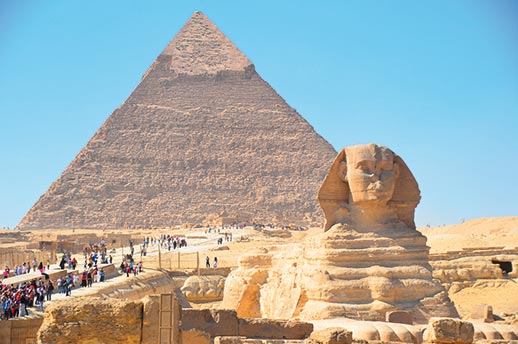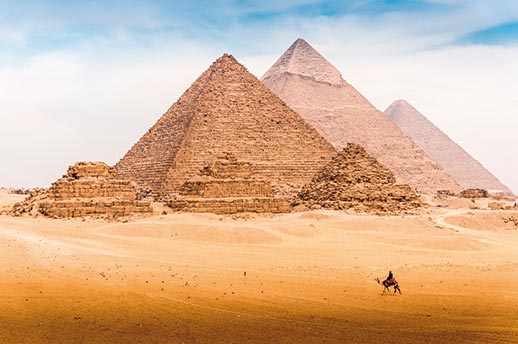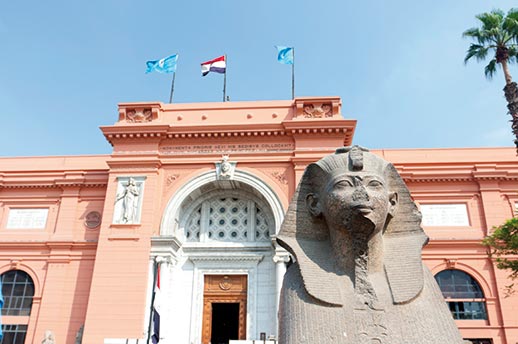Destinations
Cairo: a city of a 1000 Minarets
22nd October, 2018
No trip to Egypt would be complete without visiting the bustling capital, Cairo, where 18 million people live alongside some of the world’s most recognisable landmarks, as Ben Gibson discovered…
"He who have not seen Cairo hath not seen the world" said my battered copy of 1,001 Nights – an odd choice for in-flight reading you might think, but during my stay in Africa’s largest city I was intending to take in as much history as I could manage in a week, and this seemed as good a place as any to start. Besides, my stay was a considerably shorter six nights, and I didn’t want to miss a thing.
The plane descended on a blacked-out, twinkling vision of streetlights and neon that was completely at odds with what I was prepared for – I had in mind a city of Bedouin-types who retired at sunset and rose at dawn to tend their flocks. I couldn’t have been more wrong. Modern Cairo is more of a jumble of the old and new: towering skyscrapers sit next-door to crumbling apartment blocks, ramshackle mosques, marble shopping malls and tin-roofed stables. There was a lot to take in.
Museum Treasures
After a day relaxing, I decided to visit the Egyptian Museum, one of the most famous in the world. Someone once told me that if spending one minute at each exhibit it would take nine months to walk around it, although I managed to wander around both floors quite comfortably in an afternoon – any longer and I would have contracted ‘Pharaoh Fever’ – an overload of Egyptology which most Westerners are susceptible to.
For me the most interesting area was the Animal Mummy room which contains everything from cats and dogs to more unusual creatures such as monkeys, snakes and an alligator. Elsewhere you can see gigantic statues, tombs, obelisks, paintings, masks, figurines and countless other treasures, in a setting which is archaic and slightly dusty – and still recovering from damage incurred in the Egyptian Revolution a few years ago. Be prepared to have your bags searched and X-rayed (twice) and to be headstrong in the unmonitored queues entering the gates to buy your ticket.
There is an extra fee to pay if you want to explore the Mummy Room. This climate-controlled chamber contains some of Egypt’s mightiest pharaohs, including Ramesses II and Tuthmosis IV, both found in a cache in Luxor some 130 years ago. Seeing the gnarled faces of these diminutive kings is a rather macabre experience, but well worth the extra pounds if you want to come face-to-face (literally) with ancient royalty. Leaving the best until last, there was still one pharaoh who I had yet to see, Tutankhamun.
I queued patiently to enter the room that is now home to the treasures of the famed boy-king. Passing the guards who kept watch over the swarming masses, I entered the blackened room. My eyes took a while to adjust until the twinkling of gold and lapis lazuli came into focus. In this room a sea of jewellery lays behind triple-glazed cases amid royal chariots, armour, gilded chairs and all the paraphernalia of a royal household. It is said that around 1,700 separate objects have been recovered from this tomb alone.
People huddled in single file as they shuffled around the cool chamber, peering luridly at the fascinating treasures. The world-renowned death mask stands proud in the centre of the room, surrounded by the layers of sarcophagi uncovered by the British explorer Howard Carter over 90 years ago. But as for actually seeing Tutankhamun’s mummy, I was to be disappointed: that remains in the original tomb at Thebes.
To the Pyramids
As we left the bustle of the city behind, I felt my stomach knot in anticipation of what I was about to see. After a humid half-hour-drive the worn tips slid gently into view, standing proud amid a sprawling desert city. When describing the pyramids clichés are totally unavoidable – the sheer size of them cannot be captured by photographs.
As I walked along the base of the Great Pyramid of Khufu, the largest on the plateau, our guide paused to deliver an enlightening talk about the history of these stone monoliths. He also said that the area covered by the Great pyramid can accommodate St Peter’s in Rome, the cathedrals of Florence and Milan, and Westminster and St Paul’s in London combined. Yes, it’s that big.
My final Arabian night ended with the Sound and Light Show, held in a separate terrace directly in front of the Sphinx. As twilight approached the narrative boomed from the speakers, I was taken back to those great biblical movies such as The Ten Commandments and The Robe – the orchestra flared up with a booming score complete with crashing cymbals, and an oh-so-English narrator who relayed the legends. As the hour-long show progressed, the sun slowly set behind the plateau, lighting up the horizon a deep red – a truly spectacular sight. Yes, it’s a bit cheesy, but if you’re planning on visiting Cairo for yourself, then a trip to the Pyramids and to this show is absolutely essential.
The opinions expressed are those of the author and are not held by Saga unless specifically stated.
The material is for general information only and does not constitute investment, tax, legal, medical or other form of advice. You should not rely on this information to make (or refrain from making) any decisions. Always obtain independent, professional advice for your own particular situation.








